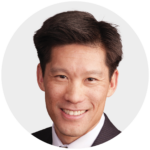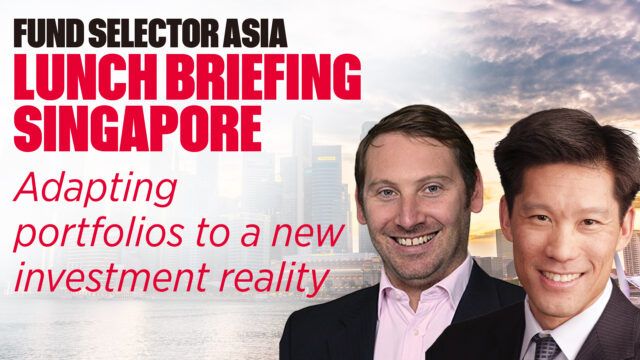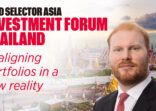What are some of the compelling assets, sectors and strategies in the coming months, given continued volatility, slower economic growth and tight liquidity conditions?

Chris: While we do expect economic growth to slow and for liquidity conditions to tighten, we continue to find opportunities which we believe will add value to our investors. This is typical for our strategy given our intense focus on credit research and the sort of opportunities we are looking to exploit. The pace of monetary policy tightening around the world has been historic, but despite that there are many companies with strong balance sheets, diverse assets and a history of prudent credit management. We see a number of companies with the potential to achieve investment grade metrics in the consumer, communication and lease financing sectors. We also see value in certain REITs, which have coverage for many types of difficult-to-replace assets such as secure document storage, hospitals, gaming and renewable power generation. Finally, an economic slowdown would have an impact on the demand for energy but we continue to see value in the gas distribution sector, which has strong revenue visibility owing to long-term contracts with little new capacity coming online to offer competition.

James: These are highly uncertain times for investors. Markets are being driven this way and that by macroeconomic news, inflation and central bank responses to it. There is a stark divergence between hawks and doves. In these conditions, events can easily spark off chain reactions in markets. One aspect that we find especially worthy of close analysis is how changes in interest rate expectations can cause significant moves between the value and the growth investment styles.
As readers will know, the value investment style prefers stocks that appear relatively cheaper, for example by comparing the stock price to company balance sheet or earnings metrics. The growth investment style prefers stocks with relatively higher growth, for example if the company’s revenues are growing faster.
We believe that it is a mistake to be only ever a value investor or only ever a growth investor. Instead, we prefer to take both these (and, indeed, other) investment styles into account and we flex our strategy between them, depending on market conditions. We believe this will continue to work well for our strategy over coming months.
How should investors rethink asset allocation amid questions about the traditional 60/40 framework?

Chris: Broad fixed income had its worst year of total returns on record in 2022—a year in which equities also underperformed—so it is understandable for investors to question how fixed income fits into their asset allocation. Short-Term High Yield provides a differentiated return and income stream with a lower correlation to traditional, rate-sensitive fixed income. The strategy benefitted in 2022 from its lower duration sensitivity and its high level of maturing securities to reinvest throughout the year at higher market yields. The income for the strategy increased materially throughout the year even as risk was reduced – a compelling combination. This has resulted in the portfolio now offering attractive levels of real yield to complement a broad investment portfolio. This strategy could be a tool for investors to de-risk some of their equity exposure while not moving fully into rate-sensitive fixed income or for fixed income investors to add to their total return potential without adding to equities at this point in the cycle.

James: The traditional 60-40 portfolio construction, meaning 60% in equities and 40% in bonds, exposes investors to significant risks, we believe. The motivation behind the 60-40 portfolio is to seek diversification: the hope is that when equities fall, bonds, as a separate asset class, may be uncorrelated and compensate. Seeking diversification is always sound, but allocation to only two asset classes (long-only equities and long-only bonds) does not deliver enough diversification, we suggest.
Looking back almost a century, from 1928 to 2022, a portfolio allocated 60% to the S&P 500 index and 40% to the return of the 10-year US Treasury bond, had a negative overall return in 21 separate calendar years. That’s between a quarter and a fifth of the number of years. If a stool fell over every four or five times you sat on it, you might conclude it was poorly designed.
Investors should consider a wider range of asset classes. Market neutral equity funds are, we suggest, a different kind of asset class from long-only equities. Adding market neutral to an equity and bond portfolio increases diversification.
What are some of the effective ways to find consistent and diversified returns in the current environment?

Chris: The dramatic increase in yields and the widening in credit compensation experienced in 2022 has altered the yield environment for fixed income investors and impacted the risk/return profile needed to produce consistent and diversified streams of income. With yields at decade highs, investors can take less risk than they were taking previously and realise higher total returns. Our approach in Short-Term High Yield is to focus on issues with three years or less to maturity and which are rated B- or higher. In the current yield environment, this approach offers investors compelling real yields over inflation and a regular stream of maturing debt which we can reinvest at attractive market rates. Our internal controls limit concentration and we broadly diversify issuers and sectors to prevent idiosyncratic risks from detracting from total returns. This process has been in place for more than 20 years and has consistently provided a reliable income stream for investors without taking outsized credit or duration risk. In a market where rates and credit spreads may continue to be volatile, this approach may be even more attractive.

James: Our investment approach, in our market neutral strategy, is designed not to be influenced by equity market moves. We do this by holding a long book and a short book in balance. Instead, we aim to extract alpha from five proprietary stock selection criteria.
Firstly, our dynamic valuation stock selection criterion selects stocks that have attractive valuations. However, it also incorporates quality to reduce the downside risk of value investing.
Secondly, our sustainable growth criterion selects stocks with strong but stable company growth characteristics.
Thirdly, our company management criterion selects stocks where there is evidence of strong company management teams making good capital investment decisions.
Fourthly, our sentiment criterion looks at changes in analyst forecasts and textual analysis of company earnings transcripts to find useful information.
Fifthly, our sentiment criterion uses stock price driven information to identify trends.
You will have noticed that each of the five stock selection criteria is very different from the others. We work hard to ensure that each of the five criteria is independent from the others, because this increases diversification and reduces risk.
















